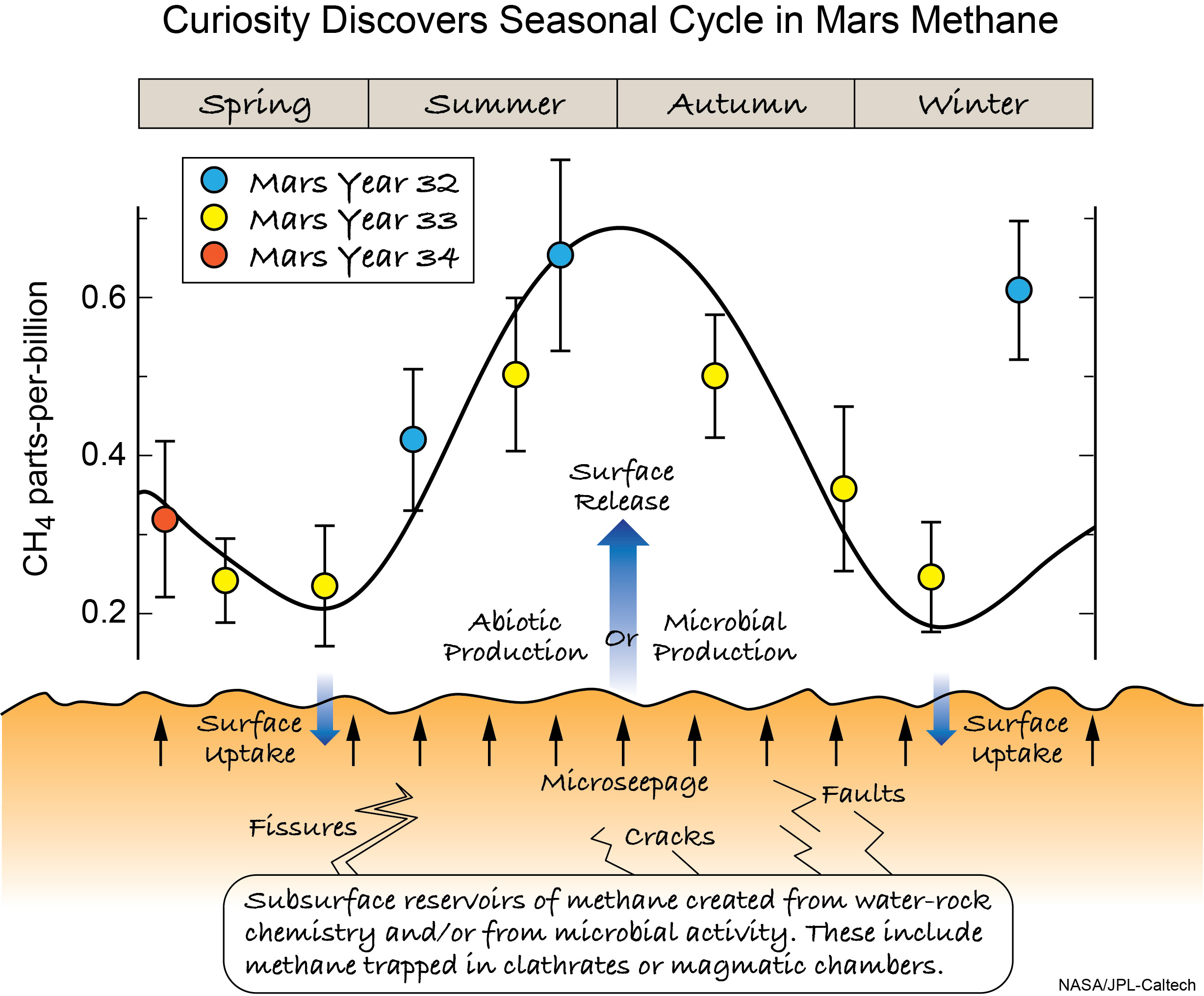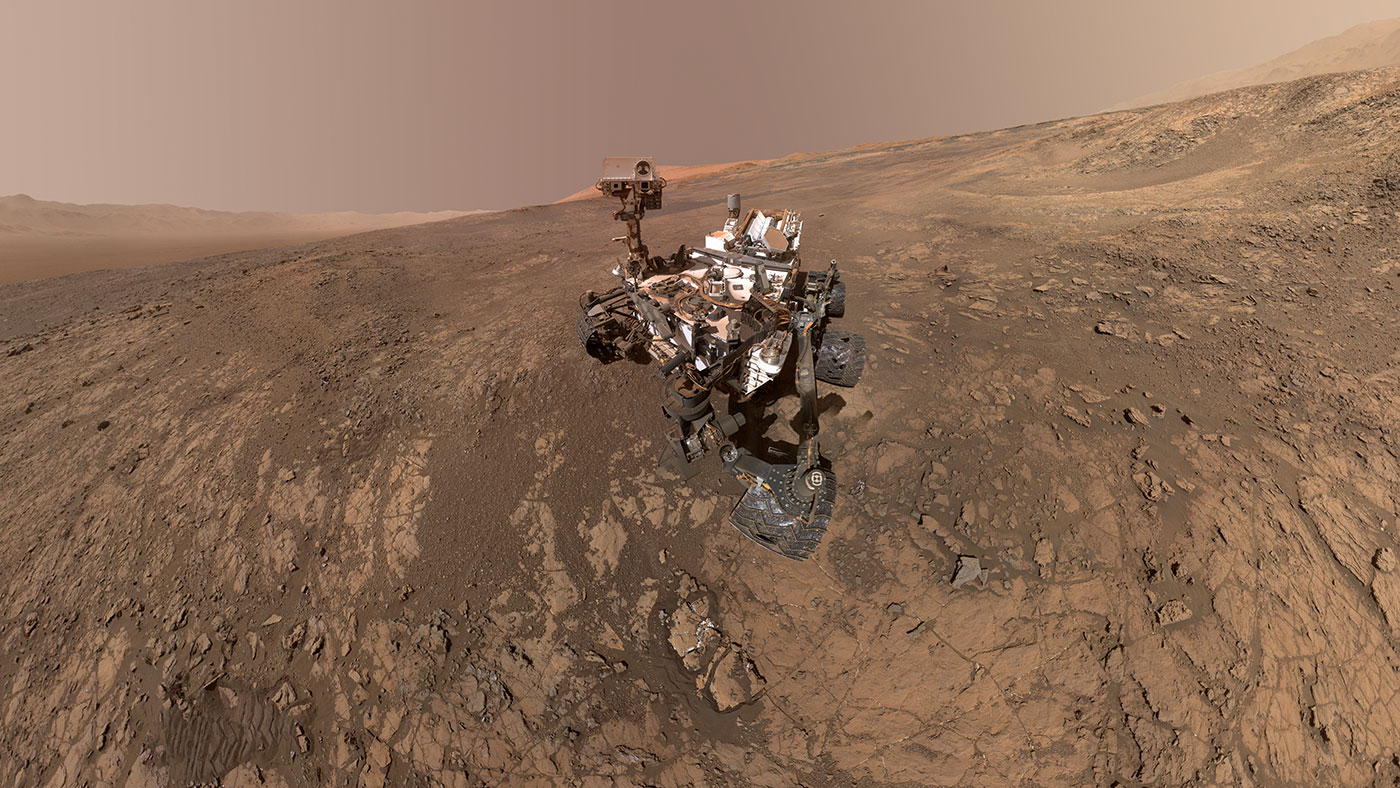Organic matter on Mars – and a seasonal methane cycle
Researchers estimate that every year, 100 to 300 tons of organic matter from space must land on the Mars surface. If one considers that this process has been going on for billions of years, then there must be abundant organic deposits (which, to be clear, were produced from abiotic processes and thus have nothing to do with organic life) to be found on Mars. However, the first probes, which analyzed Mars’s soil with a gas chromatography, Viking-1 and Viking-2, found absolutely no traces of organic materials in the regolith samples that they analyzed.
This was a source of astonishment in the science community – until today, because the journal Science has now published new data from NASA’s Curiosity Rover, which, according to the article, has found clear traces of organic molecules, among these thiophene, 2- and 3-methylthiophene, methanethiol, and dimethyl sulfide. These could also be fractions of larger molecules. The fact that these molecules were preserved in these samples – differently than in the samples analyzed by Viking 1 and 2 – might be because of an unusually high sulfur content in the samples.
The analyses by Curiosity also show that Mars has a pronounced methane cycle. At the end of the summer in the north (winter in the south), he methane content in the atmosphere is almost three times as high as in the opposite season. The researchers think that the gas is released from underground reservoirs when the temperatures rise (they suspect water-based clathrate crystals) and refreeze when the temperatures go back down. Something similar happens in glaciers at the Earth’s South Pole; there, atmospheric air is trapped in clathrate.
These results, however, do not point directly to life on Mars. But it can now be definitely assumed that Mars, 3.5 billion years ago, when the conditions there were much more favorable, had everything that was needed for the emergence of life. Hopefully future missions will determine whether that actually happened.

